da Vinci’s Dystopia
 The year is 1510. Italy is not just being transformed by the Renaissance, but by the New Science that is driving the Republic of Florence to new prominence. Water-powered looms and assembly lines radically alter its industries and their output, gliders soar above the city’s skies and provide reconnaissance and a message service, paddle steamers ferry goods and people far and wide, and the republic’s military fields new rapid-firing organ guns, armoured turtle-tanks, and more, that have seen it defeat all traditional armies sent against it. At the heart of the city is the Gran Meccanismo, a complex calculating engine driven by water clocks, windmills, and capstans turned day and night by prisoners of war and debtors, which uses the new mathematics to forecast the weather and provide calculations for a wide variety of projects, military and civil. With the rush to mechanise and advance the New Science, the Florentine Republic has thrown off the shackles of old social attitudes. Neither women nor Jews are seen as secondary citizens, especially if they can contribute towards the New Science. Yet all is not well in the Republic of Florence. Pope Julius II denounces the New Science as a Satanic design, the Venetian Republic sends its spies to ferret out the secrets of its new arisen rival’s technology, and worse, the Gran Meccanismo may yet become an engine of uniformity and control. Already Florentine citizens are required to carry a Catalogo identity card, although they are not yet commonly checked, but if some apostles of hydronetic management theory have their way, how far and how rigid will its control go? Imagine a world if Niccolò Machiavelli, military commissioner of the Republic of Florence, had not seen the potential in the drawings and designs of Leonardo da Vinci and instead left him to his painting?
The year is 1510. Italy is not just being transformed by the Renaissance, but by the New Science that is driving the Republic of Florence to new prominence. Water-powered looms and assembly lines radically alter its industries and their output, gliders soar above the city’s skies and provide reconnaissance and a message service, paddle steamers ferry goods and people far and wide, and the republic’s military fields new rapid-firing organ guns, armoured turtle-tanks, and more, that have seen it defeat all traditional armies sent against it. At the heart of the city is the Gran Meccanismo, a complex calculating engine driven by water clocks, windmills, and capstans turned day and night by prisoners of war and debtors, which uses the new mathematics to forecast the weather and provide calculations for a wide variety of projects, military and civil. With the rush to mechanise and advance the New Science, the Florentine Republic has thrown off the shackles of old social attitudes. Neither women nor Jews are seen as secondary citizens, especially if they can contribute towards the New Science. Yet all is not well in the Republic of Florence. Pope Julius II denounces the New Science as a Satanic design, the Venetian Republic sends its spies to ferret out the secrets of its new arisen rival’s technology, and worse, the Gran Meccanismo may yet become an engine of uniformity and control. Already Florentine citizens are required to carry a Catalogo identity card, although they are not yet commonly checked, but if some apostles of hydronetic management theory have their way, how far and how rigid will its control go? Imagine a world if Niccolò Machiavelli, military commissioner of the Republic of Florence, had not seen the potential in the drawings and designs of Leonardo da Vinci and instead left him to his painting?This is the setting for Gran Meccanismo: Clockpunk Roleplaying in da Vinci’s Florence, a roleplaying game designed by Mark Galeotti, best known as the designer of Mythic Russia: Heroism and Adventure in the Land of the Firebird and his contributions to the setting of Glorantha, and an academic specialising in Russian affairs. Notably, he brings his experience with the storytelling mechanics of the HeroQuest to Gran Meccanismo in what is a slightly radical shift in choice of mechanics for the publisher of the roleplaying game, Osprey Games. Although set at the height of the Renaissance, Gran Meccanismo takes the machismo and bravado, fractious politics and religious orthodoxy, and rigid social attitudes and superstitions of the period and combines and contrasts them with the features of two other, connected genres—Cyberpunk and Steampunk. These two feature a combination of lowlifes and high tech, advanced and rapidly advancing technology, both a reverence for and a fear of this new technology, but one aspect of these genres that Gran Meccanismo does not include is societal collapse or decay, although there is potential for the utopia promised by the New Science and the city block-sized Gran Meccanismo to turn the Florentine Republic into a dystopian nightmare of control and uniformity.
The first third or so of Gran Meccanismo is dedicated to its background, covering the state of Italy and its various other city-states, republics, and kingdoms, including Venice, Milan, Genoa, Rome, and others. The neighbouring nations of Europe—France, Spain, England, and others—and beyond are detailed in broader detail since they are not necessarily the stage for Gran Meccanismo, although their agents possess an interest in and will doubtless want to intervene in the affairs of the Florentine Republic. This is understandable, since taking a Gran Meccanismo campaign too far away and too often from the city of Florence would in part deny access to the technological wonders that are the roleplaying game’s raison d’être. Florence is given more detail, including its bureaucracy and notable figures, such as Leonardo da Vinci, the now one-eyed engineer and inventor due to an explosion of a device, and of course, Niccolò Machiavelli, as well as everyday life, business, war and the military, medicine, scholarship, faith—both Catholicism and the heretical, vice, and more. Mostly, this is covered in broad detail, enough to both intrigue the reader and bring that flavour to the Guide’s game. Where perhaps Gran Meccanismo is a little short on detail is in its coverage of New Science and the devices that are being invented as a result of it. This leaves scope for the Guide and the Player Characters to create their own inventions, but more starting suggestions would have been welcome.
A Player Character in Gran Meccanismo is defined by his Attributes and Traits, with the Traits being grouped under the Attributes. There are three of the latter, Body, Mind, and Soul. Both Attributes and Traits are rated in terms of the number six-sided dice assigned to them, and Traits can be as simple as Swordsmanship d2 or Student of the Dardi School d6. In comparison, a simple NPC can be defined as By the Clock Bureaucrat d3 or Drunken Tough d3. To create a character, a player defines a concept, such as ‘Religious Scholar Obsessed with the God in the Gran Meccanismo’ or ‘Rake on the make’. Nine points are divided between the three attributes and then the player is given three options in terms of defining the character’s Traits. These are by Archetype, Narrative, or Improvisation. In the Narrative method, the player assigns fifteen Traits ranging in value from one to four, and in the Improvisation method, the player starts with just two Traits and defines the rest through play. The Archetype method is a case of selecting a role such as Artificer, Banker, Bravo, Nobleman and Noblewoman, Rabble-Rouser, and more. All of the Archetypes have variations as alternative suggestions. To this the player adds three goals—one long term, one medium, and one short term, again valued by a dice pool, three Nudges, and Traits for the Player Character’s Origins. The Archetype method is the easiest and most flavoursome, whilst the others are suited to more experienced players.
Artificer Viviana Valente
Origins: Florence
Knows Florence 1d, Unfazed by the New Science 1d
Body 2
Draughtsman 2d, Fine Manipulation 2d, Dressed for Success 2d
Mind 4
Gadgeteer 4d, Knows Scientific Principles 4d, Can Read and Write 2d
Soul 3
Obsessed with the New Science 6d
Goals: Discover God in the Gran Meccanismo (Long Term), Serve my apprenticeship to Madame Patrizia Moretti (Medium Term), Pass Today’s Examination (Short Term)
Nudges: 3
Equipment: Small knife (+1d), Tools of the Trade (+2d), Pen and papers
Mechanically, Gran Meccanismo employs the TRIPOD or ‘Traits In Pools Of Dice’ system. Once the player and Guide have agreed on the intent of the test and its outcome, this involves a player building dice pools typically consisting of an Attribute and a Trait plus any benefits from the situation or scene or equipment. This is rolled against the difficulty of the test, which will require the player to roll a number of successes. For an Easy Test, just two successes are required, but a Challenging Test requires six. Rolls of four or five count as one success, but rolls of six count as two. The Guide can do this for her NPCs, which will come into play if the situation requires a confrontation or contest, such as a race, a duel, or a debate. Where this occurs, the Margin of Victory table indicates the effect of each participant’s roll, which if one or more can inflict a Damage Trait on an opponent’s Attribute. If all together the value of the Damage Traits exceeds an Attribute, then the participant in the contest or confrontation will be knocked out of play. Which might be that he is successfully robbed in a mugging, flees the scene, or is forced to concede in a debate.
To some extent, once a confrontation begins to go in favour of one participant or the other, it is difficult for the other to make a successful comeback. Fortunately, each player has several Nudges that he can use each session. Each Nudge shifts a die roll up one step, from a failure (one, two, or three on the die) to a success (four or five on the die) or from a success to a double success (six on the die). The Guide also has Nudges to use on her NPCs, but these are fewer in number. Some Traits can be Flaws though, and a player is encouraged to nominate one of his character’s Traits as such each session. Then once or twice in that session, the Guide should use it against the Player Character to make his life more complicated and the story interesting and then reward him with an extra Nudge and a Minor Advancement at the end of the session. Goals also work as Traits and can also add extra dice if the task at hand is relevant. The reward for using them is fairly substantial, but if unsuccessful, the Player Character earns a Doubt Trait, which persists until the Player Character can work it off by successfully using the Goal Trait in pursuit of the goal.
When it comes to the New Science, the Florentine Republic of 1510 has yet to achieve mass production. Some devices have been standardised, mostly for the battlefield, otherwise every item is an individual piece, almost a prototype and highly decorated. The advice is thus to make almost every item bespoke and a one-off, as well as temperamental and fragile. Mechanically, the TRIPOD system means that the numbers for a New Science device equate to that for a more traditional one, and the New Science adds flavour and verisimilitude. Which highlights the fact that the New Science is also a narrative device. Further as much as the Clockpunk of Gran Meccanismo are informed and influenced by the Steampunk and Cyberpunk genres, the one aspect of either that Gran Meccanismo lacks is the equivalent of the Internet. There is though the possibility of Clockers hacking the Gran Meccanismo in Florence, either directly at the central machine in the Palazzo Altoviti, a dedicated cogent engine attached to some nascent industrial process, or one of the stations at the city’s guard posts where one day Catalogo identity card checks might be carried out.
For the Guide there is advice on running Gran Meccanismo and on the types of games that can be run. Suggestions include Missione Impossible espionage-style games, travelogues, family sagas built around noble or even crime families, and of course, tilting the Republic of Florence into a Clockpunk Dystopia. There is advice too on scaling up the game to include the clash of armies, as well as keeping combat exciting and pushing towards a cinematic, even slightly pulpy style of play, with the use of cliffhangers. Although there is no scenario included, there are hooks throughout the book, along with numerous asides and historical notes in sidebars.
Gran Meccanismo is missing an index and a glossary as well as a timeline, which would have been useful. Similarly, given the historicity of the setting, a bibliography would have been equally useful. The lack of all three does make the roleplaying game that much harder to use as a ready reference, let alone prepare a scenario or campaign.
Physically, Gran Meccanismo is a decent looking book. The artwork is excellent, the book is well written, and the flavour text helps bring the setting of Florence and its surroundings alive.
Gran Meccanismo: Clockpunk Roleplaying in da Vinci’s Florence is arguably the first storytelling roleplaying game from Osprey Games—or at least the first to use storytelling mechanics. It combines the fast-playing, easy to grasp rules of the TRIPOD system with a setting that not only can genuinely be called unique, but one to which your first response should be, “That’s a cool idea!”






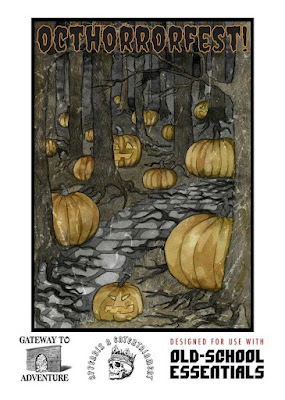







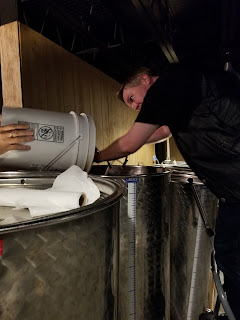
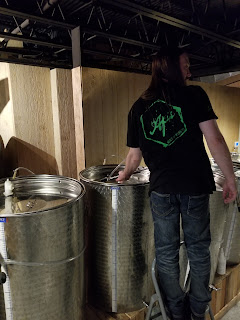
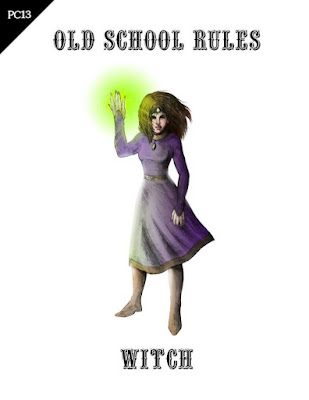

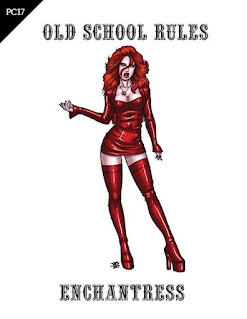
.jpg)







